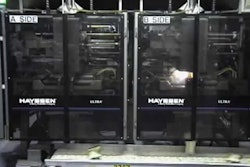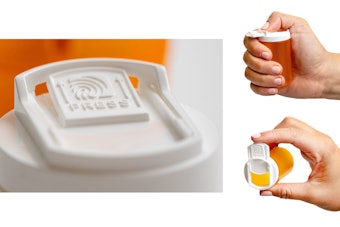
If you thought pedigrees were an issue only for Westminster Kennel Club show dogs and Kentucky Derby racehorses, think again. Pedigrees are now important for packaging, too. Thank the new bioterrorism law Congress is about to pass for that. The law’s exact requirements will be ironed out during what will undoubtedly be a raucous Food and Drug Administration rulemaking. Industry opposition to a number of the key provisions in the Public Health Security and Bioterrorism Response Act, which passed Congress early this winter, guarantees fireworks during the public comment period, which may last 18 months. But when all is said and done, companies will have to be able to establish the bloodlines of their packaging. Congress included food safety provisions in the bioterrorism bill because of concern that terrorists might tamper with food that is processed or packaged abroad and then imported into the United States. But the bill’s provisions go way beyond affecting just distributors and wholesalers with arcane names who wheel their trucks up to the docks at U.S. ports and off-load crates and containers of food. Household-name companies such as Pillsbury, Kraft, and virtually everyone else that “manufactures, processes, packs, distributes, receives, holds, or imports” is subject to new requirements dictating maintenance of certain records—regardless of whether the company is using imported ingredients or supplies such as packaging. Why are those records needed? According to the House bill, if FDA officials are given “credible evidence or information” that a batch of food “presents a threat of serious adverse health consequences,” they can use the records to “trace the source and chain of distribution of food and its packaging.” The House and Senate bills, passed by both bodies in December, contain slightly different language in some parts of the food safety section. Those differences will be resolved by a conference committee that is expected to quickly complete its work early this year.
Threshold for action One of the key differences is that the Senate bill allows the FDA to ask a company for its records if the agency “believes” there might be a problem—no “credible threat” is necessary. This is much closer to the broad authority the Bush administration asked for when it sent its model bill up to Congress in October. Whichever threshold is finally designated, companies will have to be able to trace the sources of their packaging. Beyond the use of that general terminology, though, neither bill provides much guidance on how far back down the chain of distribution a company will have to go to “trace the source” of its packaging. This is where the FDA rulemaking becomes important. It may turn out that the FDA will ask companies to keep records they already keep. On the other hand, the FDA could impose a bundle of expensive, time-consuming requirements. For example, will companies have to be able to establish where the monomers in the packaging came from, and what their exact identity is? Susan Stout, vice president of federal affairs for the Grocery Manufacturers of America, thinks any final rule on this provision should specify that any trace go “one step forward, one step back.” For example, a bakery ought to know who it sold bread to, and from whom it received its bread bags. But the company shouldn’t have to keep records on which manufacturer produced the film the converter used to make the bag.
Little guidance thus far Normally, there is some congressional testimony that supports provisions like the one on packaging pedigrees. But while the House and Senate held a number of hearings post Sept. 11 on bioterrorism, their focus was on the public health infrastructure: whether the Centers for Disease Control and Prevention was adequately funded, whether the public health system based around local county health departments was adequate, and whether we should be stockpiling more drugs in the event of a larger anthrax attack. The American Public Health Assn. was the star witness. Neither the GMA nor the National Food Processors Assn. testified in the House or Senate on the bioterrorism bill. The food safety provisions were tossed into the legislation because the Bush administration asked for them. Moreover, key House Democrats John Dingell (D-MI) and Sherrod Brown (D-OH), the senior Democrats on the House Energy and Commerce Committee, the committee of jurisdiction, had introduced the Imported Food Safety Act of 2001, after Sept. 11. The bill gave the FDA the resources to significantly increase the number of port-of-entry inspections, including testing for pesticides, microbial contaminations, and other toxins.
Is it workable? The rationale for the bill was the fact that the FDA is responsible for inspecting approximately 80% of our food supply. Yet FDA has only 750 inspectors and about $260 million to scrutinize almost 60ꯠ food plants and to inspect the majority of food crossing the border. By comparison, the U.S. Department of Agriculture, which inspects about 20% of the food supply, receives more than twice the money; and it has thousands of inspectors to oversee 6ꯠ food plants. These budget constraints allow FDA to inspect less than 1% of all imported food shipments. The Dingell-Brown bill had no provisions on maintenance of records or the tracing of food and packaging. It was an import bill, period. But somehow it got expanded considerably by the time it was placed in the bioterrorism bill. The bioterrorism bill has some other sections of interest, too. Food companies will have to register with the FDA. This should not be a big deal, according to the GMA’s Stout, because companies already register with the state. But Kristin Pearson, director of federal legislative affairs with the NFPA, says the registration provision will lead to a “logistical nightmare.” She doesn’t think the FDA can handle the new registration system, and its inability will have a negative impact on food companies.
Watching imports The bill also gives the FDA two new administrative detention authorities. If the FDA hasn’t had a chance to inspect an imported food shipment at its port of entry, but wants to because of “credible evidence”—or whatever tripwire finally makes it into the bill—it can issue a temporary detention order for 24 hours. If after the inspection, whether at a port of entry or at some food plant in the heart of the country, the FDA comes up with actual “credible evidence,” it can hold a particular shipment at a particular facility for up to 30 days. The order can be appealed up to the secretary of the Department of Health and Human Services (who may have issued the detention order in the first place), and the appeal has to be decided within 72 hours. Given President Bush’s proposed budget increases for “homeland security” in his fiscal 2003 budget, which will be the subject of congressional hearings all year, the congressional concern over food terrorism is not likely to diminish. The FDA rulemaking on packaging records will take place in that political environment.























